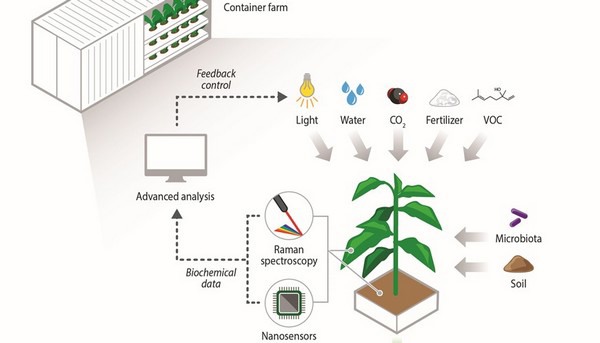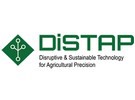Researchers from the Disruptive & Sustainable Technologies for Agricultural Precision (DiSTAP) Interdisciplinary Research Group (IRG) of Singapore-MIT Alliance for Research and Technology (SMART), MIT’s research enterprise in Singapore, and Temasek Life Sciences Laboratory (TLL), highlight the potential of recently developed analytical tools that are rapid and non-destructive, with a proof of concept through first-generation examples. The analytical tools are able to provide tissue-cell or organelle-specific information on living plants in real-time and can be used on any plant species.
In a perspective paper titled “Species-independent analytical tools for next-generation agriculture” published in the scientific journal Nature Plants, SMART DiSTAP researchers review the development of two next-generation tools, engineered plant nanosensors and portable Raman spectroscopy, to detect biotic and abiotic stress, monitor plant hormonal signalling, and characterise soil, phytobiome and crop health in a non- or minimally invasive manner. The researchers discussed how the tools bridge the gap between model plants in the laboratory and field application for agriculturally relevant plants. An assessment of the future outlook, economic potential, and implementation strategies for the integration of these technologies in future farming practices was also provided in the paper.
Plant nanosensors, developed at SMART DiSTAP, are small nanosensors - smaller than the width of a hair - that can be inserted into the tissues and cells of plants to understand complex signalling pathways. The portable Raman spectroscopy, also developed at SMART DiSTAP, is a portable laser-based device that measures molecular vibrations induced by laser excitation, providing highly specific Raman spectral signatures that provide a fingerprint of a plant’s health. These tools are able to monitor stress signals in short time-scales, ranging from seconds to minutes, which allow for early detection of stress signals in real-time.
Crop cultivation
“The use of plant nanosensors and Raman spectroscopy has the potential to advance our understanding of crop health, behaviour, and dynamics in agricultural settings,” said Dr Tedrick Thomas Salim Lew, the paper’s first author and a recent graduate student of the Massachusetts Institute of Technology (MIT). “Plants are highly complex machines within a dynamic ecosystem, and a fundamental study of its internal workings and diverse microbial communities of its ecosystem is important to uncover meaningful information that will be helpful to farmers and enable sustainable farming practices. These next-generation tools can help answer a key challenge in plant biology, which is to bridge the knowledge gap between our understanding of model laboratory-grown plants and agriculturally-relevant crops cultivated in fields or production facilities.”
Early plant stress detection is key to timely intervention and increasing the effectiveness of management decisions for specific types of stress conditions in plants. The development of these tools capable of studying plant health and reporting stress events in real-time will benefit both plant biologists and farmers. The data obtained from these tools can be translated into useful information for farmers to make management decisions in real-time to prevent yield loss and reduced crop quality.

The species-independent tools also offer new study opportunities in plant science for researchers. In contrast to conventional genetic engineering techniques that are only applicable to model plants in laboratory settings, the new tools apply to any plant species which enables the study of agriculturally-relevant crops previously understudied. The adoption of these tools can enhance researchers’ basic understanding of plant science and potentially bridge the gap between model and non-model plants.
New agriculture technologies
“The SMART DiSTAP interdisciplinary team facilitated the work for this paper and we have both experts in engineering new agriculture technologies and potential end-users of these technologies involved in the evaluation process,” said Professor Michael Strano, the paper’s co-corresponding author, DiSTAP co-lead Principal Investigator, and Carbon P. Dubbs Professor of Chemical Engineering at MIT. “It has been the dream of an urban farmer to continually, at all times, engineer optimal growth conditions for plants with precise inputs and tightly controlled variables. These tools open the possibility of real-time feedback control schemes that will accelerate and improve plant growth, yield, nutrition, and culinary properties by providing optimal growth conditions for plants in the future of urban farming.”
“To facilitate widespread adoption of these technologies in agriculture, we have to validate their economic potential and reliability, ensuring that they remain cost-efficient and more effective than existing approaches,” the paper’s co-corresponding author, DiSTAP co-lead Principal Investigator, and Deputy Chairman of TLL Professor Chua Nam Hai explained. “Plant nanosensors and Raman spectroscopy would allow farmers to adjust fertiliser and water usage, based on internal responses within the plant, to optimise growth, driving cost efficiencies in resource utilisation. Optimal harvesting conditions may also translate into higher revenue from increased product quality that customers are willing to pay a premium for.”

